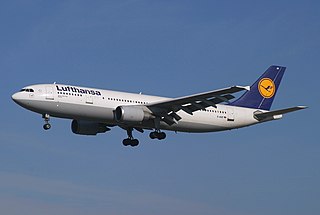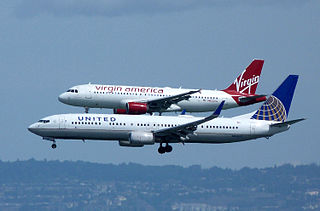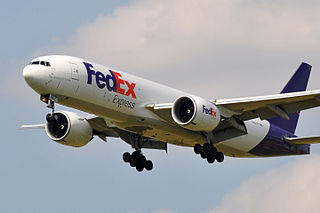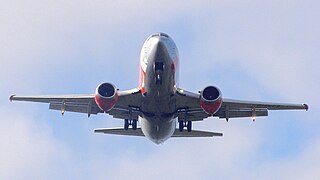 Douglas DC-7C of Schreiner Airways at Amsterdam Airport in 1967 | |||||||
| |||||||
| Founded | 1945 | ||||||
|---|---|---|---|---|---|---|---|
| Ceased operations | 2005 | ||||||
| Fleet size | See Fleet below | ||||||
| Headquarters | the Netherlands | ||||||
Schreiner Airways was a charter, passenger and cargo airline based in the Netherlands.
 Douglas DC-7C of Schreiner Airways at Amsterdam Airport in 1967 | |||||||
| |||||||
| Founded | 1945 | ||||||
|---|---|---|---|---|---|---|---|
| Ceased operations | 2005 | ||||||
| Fleet size | See Fleet below | ||||||
| Headquarters | the Netherlands | ||||||
Schreiner Airways was a charter, passenger and cargo airline based in the Netherlands.
Schreiner was an offshore helicopter operator which was founded in 1945. The various flight operations were split amongst several companies of the Schreiner Aviation Group, such as Schreiner Airways, Schreiner North Sea Helicopters and Schreiner Aviation Training. The Schreiner Aviation Group was purchased by the CHC Helicopter Corporation in 2005 and Schreiner Airways became CHC Airways.
Having previously operated smaller aircraft types, Schreiner Aerocontractors NV acquired two Douglas DC-3 twin engined 28-seat airliners in 1963 and operated them on intra-European passenger and freight charter flights. The aircraft were disposed of in 1967. [1] Between April 1964 and December 1967 a total of six owned and leased Fokker Friendship twin-engined turboprop airliners were flown on European passenger flights. Three Douglas DC-7C long range airliners were operated on intercontinental charter flights between July 1965 and June 1968. [2]

The Schreiner group established a dedicated cargo operation in 1997 and leased a Lockheed C-130 Hercules freighter which operated cargo services for KLM Royal Dutch Airlines. The aircraft was returned to its owner in 1998. Three Airbus A300 jet freighters were acquired and flown for KLM on cargo services between 1999 and 2001, when this operation was terminated.
As of August 2006 the Schreiner Airways fleet included: [4]
It had a fairly large fleet of aircraft and between 1999 and 2001 and also operated three Airbus A300 cargo aircraft on behalf of KLM. [5]
At the Aviodrome aviation museum on Lelystad Airport a retired Aérospatiale Dauphin 2 helicopter in Schreiner colors is on display.

The Airbus A300 is Airbus's first production aircraft and the world's first twin-engine, double-aisle wide-body airliner, developed and manufactured by Airbus from 1971 to 2007.

An airliner is a type of airplane for transporting passengers and air cargo. Such aircraft are most often operated by airlines. The modern and most common variant of the airliner is a long, tube shaped, and jet powered aircraft. The largest of them are wide-body jets which are also called twin-aisle because they generally have two separate aisles running from the front to the back of the passenger cabin. These are usually used for long-haul flights between airline hubs and major cities. A smaller, more common class of airliners is the narrow-body or single-aisle. These are generally used for short to medium-distance flights with fewer passengers than their wide-body counterparts.

Cargo airlines are airlines mainly dedicated to the transport of cargo by air. Some cargo airlines are divisions or subsidiaries of larger passenger airlines. In 2018, airline cargo traffic represented 262,333 million tonne-kilometres with a 49.3% load factor: 52.1% for dedicated cargo operations, and 47.9% within mixed operations.

The McDonnell Douglas DC-10 is an American trijet wide-body aircraft manufactured by McDonnell Douglas. The DC-10 was intended to succeed the DC-8 for long-range flights. It first flew on August 29, 1970; it was introduced on August 5, 1971, by American Airlines.

The Airbus A310 is a wide-body aircraft, designed and manufactured by Airbus Industrie, then a consortium of European aerospace manufacturers. Airbus had identified a demand for an aircraft smaller than the A300, the first twin-jet wide-body. On 7 July 1978, the A310 was launched with orders from Swissair and Lufthansa. On 3 April 1982, the first prototype conducted its maiden flight, and the A310 received its type certificate on 11 March 1983.

The Airbus A330 is a wide-body aircraft developed and produced by Airbus. Airbus began developing larger A300 derivatives in the mid-1970s, giving rise to the A330 twinjet as well as the A340 quadjet, and launched both designs alongside with their first orders in June 1987. The A330-300, the first variant, took its maiden flight in November 1992 and entered service with Air Inter in January 1994. The slightly shorter A330-200 variant followed in 1998 with Canada 3000 as the launch operator.

A wide-body aircraft, also known as a twin-aisle aircraft and in the largest cases as a jumbo jet, is an airliner with a fuselage wide enough to accommodate two passenger aisles with seven or more seats abreast. The typical fuselage diameter is 5 to 6 m. In the typical wide-body economy cabin, passengers are seated seven to ten abreast, allowing a total capacity of 200 to 850 passengers. Seven-abreast aircraft typically seat 160 to 260 passengers, eight-abreast 250 to 380, nine- and ten-abreast 350 to 480. The largest wide-body aircraft are over 6 m (20 ft) wide, and can accommodate up to eleven passengers abreast in high-density configurations.

A jet airliner or jetliner is an airliner powered by jet engines. Airliners usually have two or four jet engines; three-engined designs were popular in the 1970s but are less common today. Airliners are commonly classified as either the large wide-body aircraft, medium narrow-body aircraft and smaller regional jet.
Syrian Airlines, operating as SyrianAir, is the flag carrier of Syria. It operates scheduled international services to several destinations in Asia, Europe and North Africa, though the number of flights operated has seriously declined since 2011 due to the Arab Spring and subsequent Syrian war. SyrianAir previously served over 50 destinations worldwide. Its main bases are Damascus International Airport and previously Aleppo International Airport. The company has its head office on the fifth floor of the Social Insurance Building in Damascus.

The McDonnell Douglas MD-11 is an American tri-jet wide-body airliner manufactured by American manufacturer McDonnell Douglas (MDC) and later by Boeing. Following DC-10 development studies, the MD-11 program was launched on December 30, 1986. Assembly of the first prototype began on March 9, 1988. Its maiden flight occurred on January 10, 1990, and it achieved Federal Aviation Administration (FAA) certification on November 8. The first delivery was to Finnair on December 7 and it entered service on December 20, 1990.

The Boeing 747-400 is a large, long-range wide-body airliner produced by Boeing Commercial Airplanes, an advanced variant of the initial Boeing 747. The "Advanced Series 300" was announced at the September 1984 Farnborough Airshow, targeting a 10% cost reduction with more efficient engines and 1,000 nautical miles [nmi] of additional range. Northwest Airlines became the first customer with an order for 10 aircraft on October 22, 1985. The first 747-400 was rolled out on January 26, 1988, and made its maiden flight on April 29, 1988. Type certification was received on January 9, 1989, and it entered service with NWA on February 9, 1989.

The Douglas DC-6 is a piston-powered airliner and cargo aircraft built by the Douglas Aircraft Company from 1946 to 1958. Originally intended as a military transport near the end of World War II, Douglas reworked it after the war to compete with the Lockheed Constellation in the long-range commercial transport market. Douglas built over 700, and many still fly in cargo, military, and wildfire control roles.
Olympic Airlines, formerly named Olympic Airways, was the flag carrier airline of Greece. The airline's head office was located in Athens. The airline operated services to 37 domestic destinations and to 32 destinations worldwide. The airline's main base was at Athens International Airport, "Eleftherios Venizelos", with hubs at Thessaloniki International Airport, "Macedonia", Heraklion International Airport, "Nikos Kazantzakis" and Rhodes International Airport, "Diagoras". Olympic Airlines also owned a base at London Heathrow Airport. By December 2007, the airline employed about 8,500 staff.
This is a list of aviation-related events from 1977.
Africa Safari Airways was an airline based in Mombasa, Kenya. It operated charter flights and inclusive tours beginning in 1967 from Europe, mainly to Mombasa. Its main base was Moi International Airport, Mombasa. It ceased operations in 2009.

Titan Airways Limited is a British charter airline based at London Stansted Airport. The carrier specialises in short-notice ACMI and wet lease operations, as well as ad-hoc passenger and cargo charter services to tour operators, corporations, governments, and the sports and entertainment sectors. The company holds a United Kingdom Civil Aviation Authority Type A Operating Licence, permitting it to carry passengers, cargo and mail, on aircraft with 20 or more seats.

Trans Mediterranean Airways SAL, styled as TMA Cargo, was a cargo airline based in Beirut, Lebanon. The airline restarted operations in 2010, following a six-year hiatus. It suspended operations once again in September 2014.

A cargo aircraft is a fixed-wing aircraft that is designed or converted for the carriage of cargo rather than passengers. Such aircraft generally feature one or more large doors for loading cargo. Passenger amenities are removed or not installed, although there are usually basic comfort facilities for the crew such as a galley, lavatory, and bunks in larger planes. Freighters may be operated by civil passenger or cargo airlines, by private individuals, or by government agencies of individual countries such as the armed forces.

A twinjet or twin-engine jet is a jet aircraft powered by two engines. A twinjet is able to fly well enough to land with a single working engine, making it safer than a single-engine aircraft in the event of failure of an engine. Fuel efficiency of a twinjet is better than that of aircraft with more engines. These considerations have led to the widespread use of aircraft of all types with twin engines, including airliners, fixed-wing military aircraft, and others.